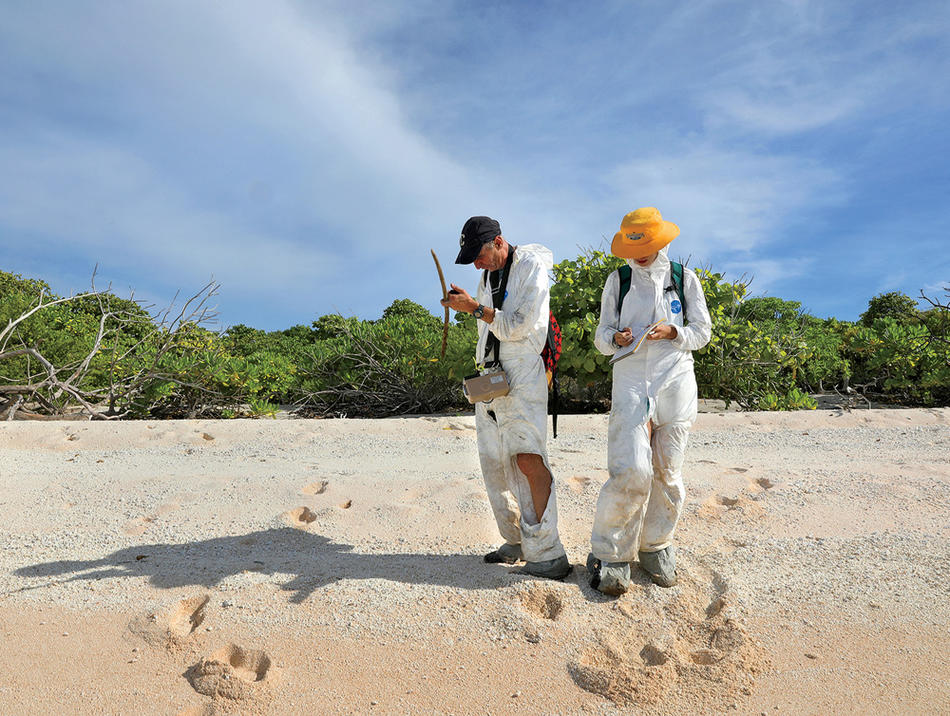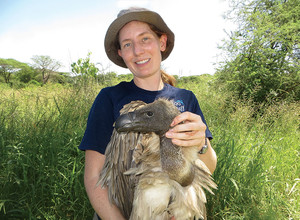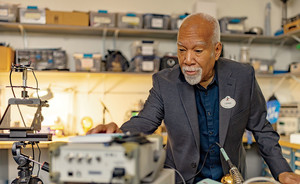More than half a century after the US conducted nuclear-bomb tests on the Marshall Islands, radiation levels there remain dangerously high, according to new research led by physics professors Emlyn Hughes ’87GSAS and Malvin Ruderman ’46CC.
Their team recently traveled to the Marshall Islands, a nation of twenty-nine coral atolls in the Pacific Ocean, to determine if any parts of the territory that have long been considered too radioactive for human habitation could be repopulated. The scientists found that some restricted islands are now safe for people, but that others should remain off-limits. They also determined that fruits growing on several uninhabited islands that the Marshallese often visit to collect food are unsafe to eat.



